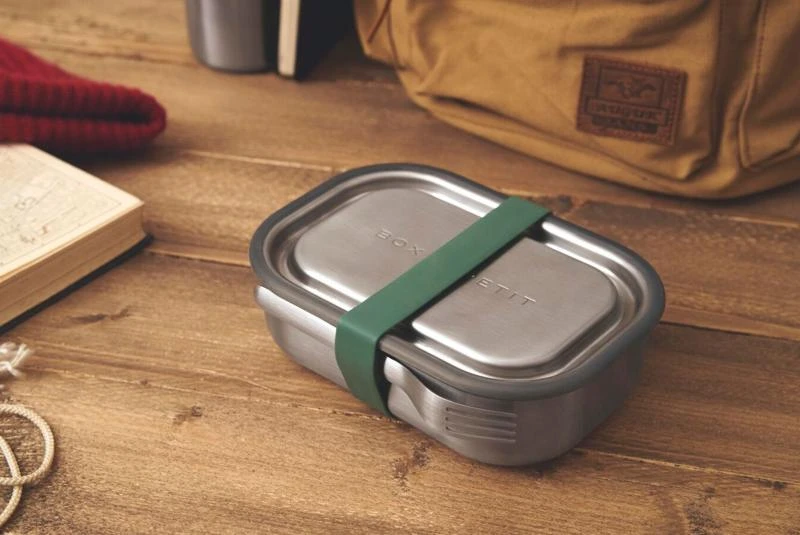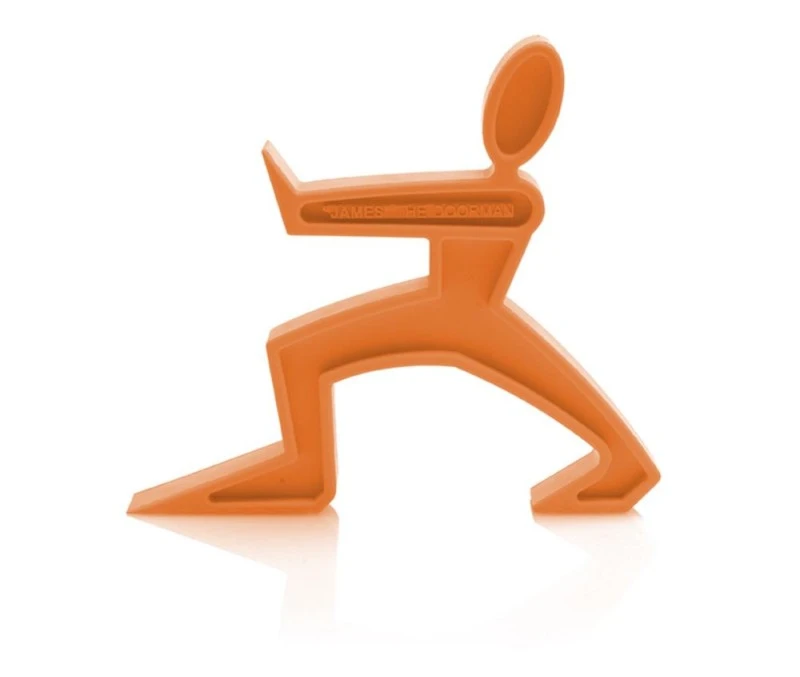Home - Interview

Interview with Dan Black, Co-founder and Lead Designer of Black+Blum
Home - Interview
by Beren Dere
Since it was founded in 1998, Black+Blum has a consistent design philosophy that makes their products successful. They designed only unique and functional products. By this way, they have won more than 25 international design awards and they designed functional products for their users. I recently had the opportunity to talk with Dan Black, Co-founder and Lead Designer of Black+Blum, and asked him about the past, present and future of Black+Blum.

Dan Black, Co-founder and Lead Designer of Black+Blum
Dan, could you tell us about your educational background and professional design career? Who is Dan Black?
My father had a factory that made slippers and bags, so I grew up from a very early age discussing business and products. I have three older brothers and all four of us have our own companies, so discussing products and business around the kitchen table, must have rubbed off on us. My eldest brother makes bed and has a company called Button & Sprung, the other two brothers have a childcare business called My Family Care.
I studied product design at Northumbria University (the course is called Design for Industry and famous graduates include Jonny Ive - head of design at Apple). It was a fantastic course and in the 2nd and 3rd year, you go on placement to work in industry. Each student would work somewhere different and learn something new. They would then bring these skills back and the students would lean off each other. I did internships at IDEO London and Frog Design California.
When did you first decide to become a designer? What or who inspired you?
I always had a love of products, but it wasn’t until I was studying design at university, that I really considered making it my career it. My parents were pretty enlightened and always encouraged me to pursue a career in a subject I enjoyed. I am lucky that there are lots of things I enjoy. I have ended up being a homeware designer (now specialising in water bottles and lunchboxes), but I am sure I would have been just as happy designing furniture, lighting, gardens, bags, shoes or even buildings. Equally, I have an ambition one day to become a landscape or still life painter.
How did you meet with Martin Blum? Why did you decide to establish black+blum?
Martin Blum is a friend from university and we studied on the same course at the same time. While on the course, we always talked about starting a company together and the dream job being to design and make our own products that we were passionate about. So I feel very lucky that this is what I am now doing. Martin is still a good friend, but hasn’t been involved in the business for over five years.

Black+Blum
How would you describe your design approach? What is your signature in your designs? What is your creativity source?
Our early designs had no specific category. We designed, lighting, fans, barbecues, basically anything that we thought was a good idea. There was no set price range, material or aesthetic style. It always started with an idea, but apart from that, it was pretty much a blank canvas. Now we are focusing on ‘food and drink on the go’ and are developing a strict design language, but each design still starts with a unique idea where we are performing a function better than what is currently on the market and doing something different. All our designs are unique to us and are developed from scratch. We want our designs to always be functional and to give the owner pleasure in using them. We would hate to launch a product, which is similar to others on the market or even a gadget (a product which is supposed to solve a problem, but doesn’t work and ends up not being used). There are already too many products being made in the world, so it is a designer’s responsibility to only produce items which function well.

Black+Blum
What type of projects do you prefer and enjoy working on the most? What is your favorite material to use in your designs?
We love working on designs where we genuinely feel what we have created something new and special and better than anything else on the market. We like to work with materials like stainless steel, glass, and cork. These are all materials that can get better with age and use. Plastics have so many functional and manufacturing advantages, but it is not always easy to give it the same value as other materials, because people are used to it being low value and associate it with products, which are disposable. We want our designs to get better with use, and develop their own soul and character as they age and wear. Designs which get better with use are the ones that you value the most and have the chance of becoming antiques of the future.
What was your first commercial work? What has been changed in the design industry and your vision over the years from the first one to now?
Our first design was a light called ‘Climbing Light’. It was extremely minimal, being made from just a piece of wire and an electric cord-set. You screwed it to the wall and with a chrome top bulb, it became an extremely functional down-light above your bed. At the time of launching this in 2000, using a character in design was not common. Alessi had only just launched their designs with Philippe Stark and people were realising that character could be used in design. The clever thing about character and humor in design is that it can appeal to all tastes and ages and even design purists. Today, we don’t use a character in design, but only because it is now very commonplace and doesn’t necessarily add value to the items we are designing. The function is now our key priority over character.

Black+Blum
It is hard to talk about all your designs, so I select the most celebrity one, James the doorman. James is your iconic design that everybody knows. What was the story of James? What was the contribution of James to the success of black+blum?
In a design career that spans twenty years, you need some luck along the way. James was ours. We had just moved to our studio in the Oxo Tower in the year 2001. We had a heavy glass door and wanted to create a fun doorstop that would hold it open. So we cut out of wood the rough shape of a person pushing the door. It was amazing how many people commented on it, so we thought we should produce an actual design that we could sell.
In 2002 we showed the design that people know today as ‘James the doorman’ at a trade fair. It got a good reaction and we took a few orders from some nice design shops. At the end of the show, an American lady came up to our stand and said that she really liked the design and would like to order some. She gave me her business card. I didn’t recognize the name of the company, but I followed up and sent her an email with some prices. The company was Target, one of the largest retailers in the US. They ended up ordering a lot of James the doorman and this gave us enough money to grow the company and invest in new designs. I have three children and my oldest son is called Jamie… I joke with him that he is named after ‘James the doorman’, who came before him.
How do you decide to start a new project and run to the end? Do you make a plan or only expect inspiration?
Nowadays, we have a 2-3 year project pipeline. This means we are pretty disciplined about analyzing how any new design will fit into our range. Designs can take 18 – 24 months to develop, so it really helps to plan designs well in advance. In the past, we weren’t so organised and designs came about by chance. There are advantages and disadvantages to both methods. Sometimes sparks of inspiration come out of nowhere, but generally, this happens when you have subconsciously been thinking around the issue for some time.

Black+Blum
Could you tell us about your Studio and your team? Is it possible that our readers can visit you to see and buy your products on the source?
Our office and design studio are situated in the Oxo Tower, which is next to the river Thames in central London, between the London Eye and the Tate Modern. It isn’t a big space, but there is a small shop area and people are very welcome to come and visit and we can talk them through the designs. Our team is made up product designers, graphic design, sales, and sourcing. We are lucky to have such a great team and everyone is extremely passionate about the products we design and sell.
What do you think about 3D printers? How did they affect the design culture? Do you still use paper and pen for your sketches, or is everything digital now?
We do use 3d printers a lot to help us understand form and size an early stage of development. But, we still always start a project by doing a lot of sketching first. CAD and advanced rendering software, makes it very easy to visualize a new design on the computer quickly, but physical models (whether cardboard or 3D printed) are also essential. I don’t think the computer has taken away the need to sketch and 3D visualization has not taken away the need to model making. The process of design hasn’t changed, but CAD and 3D printed models just help make certain aspects of the process quicker.

Black+Blum
What is the best advice you have ever received, and what advice would you give to young designers?
It might sound corny, but follow your heart and design products that you are passionate about and you would want to use yourself. Don’t always settle on the first idea you come up with, but continually challenge how you can refine it or make it more minimal. There are already too many products in the world, so always ask yourself ‘does the world really need another ...?’. If the answer is no, how do you justify designing it?
What is the importance of social media for you?
When we first started designing products, social media and digital cameras didn’t exist. These two factors have had a massive impact on design. Firstly, customers are more savvy in terms of appreciating good design or rather having a better knowledge of what their options are. Secondly, it has helped make it easier for designers to be able to communicate the functionality of new designs.
Where can our readers see and buy your designs?
Best to buy directly from our or visit our studio website https://black-blum.com/
What is next for you?
We have some really exciting new designs in the pipeline, so watch this space or sign up to our mailing list or follow us on social media, so we can update with all our new launches.
Thank you Dan.
For more information, please visit website of Black+Blum
This interview was conducted in a Question-and-Answer format. The answers were checked for grammar and punctuation and published without any additional editing. Friday, July 13, 2018. All photos are the property of their respective owners.